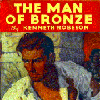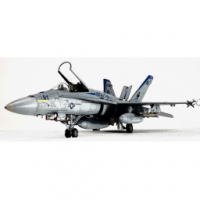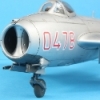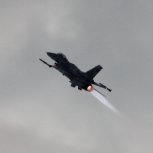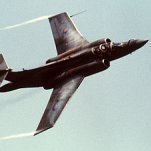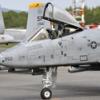Leaderboard
Popular Content
Showing content with the highest reputation on 30/05/18 in all areas
-
Hello all...miss me? As many of you know, I managed to get my hands on the controls of a Spitfire T.9 in August 2017. I may have mentioned it. Once or twice. I've been beavering away since Christmas converting a 1/32 Revell MkIX into a two seater, as no such kit exists, and it'll be appearing in a copy of MAI at some point in the future. Just a couple of teasers for now, though... Hope you like it, Dean28 points
-
Hi guys. Long time since my last post. Here's just taken off the oven, an excellent kit, probably the best kit I've built ever. She was painted with Gunze in RLM70/71/76 and splots with White (flatted with Alclad Klear Kote Flat). Depicts one of Nowotny's A-4 piloted over Eastern Front circa Spring 1943. Thx for seeing. Best regards.27 points
-
This one has been on the bench for far too long. I'm pleased with how it turned out, but also happy to have it out of the way haha. SBS cockpit True Details wheels Hollowed exhausts and gun barrels Riveted Montex and custom paint masks etc23 points
-
22 points
-
Hello mates, not only old stuff no... this is my big new Shilo, quite hard work... but i love her...started on April 16, 2016, finished on October 17, 2017, 170 hrs...she is quite pimped and the real coke bottle took 40 hrs alone i added one picture, PJ Productions navigator forgot his scratchbuilt briefcase, omeio checkov, therefore hatch open by eduard crew chief, second Kh-22 under belly is a pimped Trumpeter Tu-22M3 one Cheers, Tom20 points
-
This was just sit down and go together kit. I had purchased an over-tree box at USA IPMS Nationals in 2017. What a great deal. Techmod Israeli Decals 72122 Pastel Dusting and slight washes in access panels Xtracrylcs for Colors and Testors Rattlecan Dullcoat decanted for final seal. Eduard Steel seatbelts and they were great. Rest was Out-Of-Box construction. This was a true pleasure to build. Thanks for Viewing. Comments Welcome Bill20 points
-
Allow me to present one of a pair of 737-300 models in 1/144 scale, built for the recent 737 Single Type Group Build on here. The other one in WestPac Colorado Springs livery is elsewhere in RFI. I normally build military aircraft or race cars but I do find the schemes on airliners interesting and this one was a long term ambition of mine after seeing the kit/decal sheet combo built somewhere. I tried for many years to get a copy of the decal sheet and finally I saw it re-printed and I caught the release before it sold out. For those unfamiliar with it, Daco is a brand owned and run by Danny Coreman of Belgium, maybe best known for F-16 and F-104 decals, upgrades and reference materials. He does however have a pretty sharp line in 737 kits and it is one of these I have built here. The kit is very detailed, seems pretty accurate and is offered with a generic decal sheet absolutely ram-packed full of stencils, windows and doors, and wing Coroguard and NMF leading edges etc. You need to source your own livery decals and here again Daco steps forward with an extensive range of sheets. Western Pacific (now sadly defunct) operated out of Colorado for barely 3 years but in that time brought some serious colour to the skies by turning their aircraft into flying bill-boards; with this one they were sponsored by Fox who lent the Simpsons characters to the livery. The decals were designed for Daco's own kit and I have to say these were probably the best fitting decal sheets I have ever used. The kit went together a treat though some fun was had with the wing/fuselage joint - easily solved with a bit of careful sanding and scraping. The Simpson's sheet also came with a small etched fret for the various aerials and sensor heads that adorn a 737. The kit includes a separate clear cockpit area which requires a bit of cutting but this is simplified by thinned areas on the inside surface. I took the opportunity to use this and scratch-build some cockpit detail - seeing the end result I am not so sure it was a smart move as nothing can be seen of the interior! Oh well, live and learn! Sorry if I got carried away here but, as you can probably tell, I was pretty impressed with this litte kit. Since my last experience of a 1/144 airliner was from the 70s with one of Airfix's Skyking range I was amazed by the detail and refinement - airliner kits have come a long way since then! For painting I used Daco's own Simpson's Yellow and WestPac Blue (produced by Xtracolor) and for the wings/tailplanes I took the advice of the regulars in the STGB and used Halfords Racking Grey as a good match for Boeing Grey Anyway, enough waffle, here are the pics - hope you enjoy looking as much as I enjoyed building. Comment and criticism welcome as always. Thanks for looking ATB Rick18 points
-
This is my next model. I try to glue quickly. 2-3 days for the model. I tried to do a nice, lazy crews. https://scontent-frt3-2.xx.fbcdn.net/v/t1.0-9/34013662_1801828029873214_1592817612750848000_o.jpg?_nc_cat=0&oh=65e29233739bb28202f2a33def1cc3c6&oe=5B86D15118 points
-
Hi all, Just finished this last night. I spent far too long on it, nearly four months, but that's probably more to do with not enough time at the bench then actual effort put into it. It represents one of the 4 Chinook Gunships that flew in Vietnam - 'Co$t of Living'. Unfortunately while on a mission the mounting pins on one of the 20mm Cannon came loose and caused it to fire into its own rotors and the aircraft was lost with all of its crew. I went all out on this, I got the Eduard PE set, most of which is inside the cabin and can now only be seen with a torch! I also got some Zotz decals and I have to say experience of them was poor, I was cursed with silvering! In fact, that's my biggest gripe with this build. I tried some black basing but ended up being a little too subtle with it. Used Mr. Paint for the main colour (a paint I'm falling in love with) and also used Uschi Rigging for the first time for the aerial and found it excellent! Anyhow, here are some pics (it's a difficult bugger to photograph!). Any advice/comments welcome, I'm here to learn. Thanks... Kit: Italeri ACH-47A Chinook Gunship Scale: 1:72 Paint & Weathering: Airbrushed with Mr. Paint and Tamiya Paints, weathered with Oils and Pastels Extras: Eduard PE Set and Zotz Decals Build Thread: Here17 points
-
#14/2018 Finally my dad finshed the third and last Red Tulip. Eduard kit (funny thing is that the kit´s tulip decals are too big, my dad had to adjust them to kit size), no "Dödel" included in the kit so my dad used W.Gr.21 from Eduard´s Brassin line. Brake lines and antenna wire added. The aircraft seemed to be a testbed for outer landing gear covers, these came from the sparesbox. Painted as usual with Gunze and Tamiya acrylics. Like with the Hasegawa 109s, also Eduard got the legs 2-3mm too long. This was the first time my dad shortened them to get a more realistic look. Build thread here: https://www.britmodeller.com/forums/ind ... -bf109g-6/ DSC_0002 by Reinhard Spreitzhofer, auf Flickr DSC_0002 by Reinhard Spreitzhofer, auf Flickr DSC_0003 by Reinhard Spreitzhofer, auf Flickr DSC_0004 by Reinhard Spreitzhofer, auf Flickr DSC_0005 by Reinhard Spreitzhofer, auf Flickr DSC_0006 by Reinhard Spreitzhofer, auf Flickr DSC_0007 by Reinhard Spreitzhofer, auf Flickr DSC_0008 by Reinhard Spreitzhofer, auf Flickr DSC_0009 by Reinhard Spreitzhofer, auf Flickr DSC_0010 by Reinhard Spreitzhofer, auf Flickr DSC_0011 by Reinhard Spreitzhofer, auf Flickr DSC_0012 by Reinhard Spreitzhofer, auf Flickr DSC_0013 by Reinhard Spreitzhofer, auf Flickr DSC_0014 by Reinhard Spreitzhofer, auf Flickr DSC_0015 by Reinhard Spreitzhofer, auf Flickr DSC_0017 by Reinhard Spreitzhofer, auf Flickr DSC_0018 by Reinhard Spreitzhofer, auf Flickr and the whole gang together DSC_0019 by Reinhard Spreitzhofer, auf Flickr DSC_0020 by Reinhard Spreitzhofer, auf Flickr16 points
-
I Made this 1/32 italian Air Force F-104s maintenance diorama starting from the Italeri model, I added a lot of detail using commercial add-ons but also a lot of scratchbuilt ones, expecially inside the plane. All was made using real pictures and books as reference. You will find the RAT, and the fuel pipes on the back of the plane and many other all around the plane you can find in the detail pic. I've made new carts and ladders and other details around the diorama. The scenery was made using photo-paint and printer.15 points
-
Hi again all! This time I've opted for something a little more local. The date was 23rd June 1978 and the following few shots are from a visit to the carrier while docked in Stokes Bay, off Portsmouth, UK. A typically grey and wet day played havoc with Kodak's finest but I've wrestled these in to submission ;): I hope you like them. Martin15 points
-
Hello, I am a new member to the forum and I was asked to add some pictures of my work. The following pictures are a “plank on frame” kit of the Port Jackson Schooner called The Mercury. The kit comes from Modellers Central in New South Wales, Australia who have a series of Australian themed kits along with their imported kits. This was my first wooden boat kit and I’m quite pleased with the way that it turned out. It took my a period of 12 years but that included lots of work and family commitments. Now that I have retired I’m hoping the my next boat, Cook’s Endeavour won’t take so long. Any constructive comments are welcome.14 points
-
My first ever model, I have to say I'm quite pleased with the outcome. I've learned two valuable things during the build - actually I learned hundreds of valuable things but two above all else. Firstly I have learned to have the greatest respect for you guys who build these sailing ships, no matter the scale, and produce such wonderful results. Secondly I've learned never to do a sailing ship again. 🤨 All that string and hair thin masts was not as relaxing as the earlier part of the build. I think I'll be moving to the aircraft section for the foreseeable. Paint pots are for scale as I know I often wonder just how big some of the models I see on here actually are. I hope it's not too many pictures, not sure of the etiquette yet and I also hope you can see them, the screen on this old laptop isn't the best so I have no idea what the rest of the world sees. I am very open to comments and/or criticism, being new to this I'm still scrambling up the learning cliff, every little helps.14 points
-
Hello, Here's my 1/72 Italeri Jaguar T.2. Nothing fancy, just the kit parts and decals. I did paint the tail stripe, because the decal provided was too short. This kit is not one of Italeri's best, imo, but in the end it looks like a Jaguar. I hope you like it. Thanks for looking, Pete11 points
-
Hi folks Well it isn't an AFV and it definitely isn't a non-military vehicle, so by virtue of part of it having wings of a sort I'm posting this here... Regards JA10 points
-
Hi Let me show you my other 737 STGB build. Similar to the Simpson's jet elsewhere in this RFI this is one of the exquisite little Daco kits - as I mentioned, the kit only includes a generic sheet with a huge range of stencils, windows, door outlines etc so one needs to provide the livery from another source and I chose another of Daco's own sheets for a WestPac aircraft. WestPac operated for only 3 years in the late 1990s and decorated their aircraft with huge logo-style liveries. They were based in Colorado and the jet I chose here was liveried up to promote Colorado Springs with a striking representation of the local scenery across the rear fuselage and tail. Unlike the Simpsons sheet, this one was an absolute pig that fought me every inch of the way (maybe it was an older generation sheet?). Yes, it is superbly engineered to fit the kit (14 individual items go together to create that scenery down back!) but the decals, albeit thin, are incredibly stiff and unyielding. Much use of various setting solutions (inc Daco Medium and Strong solutions) and repeated application of the hairdryer finally saw the decals settle down and, being thin, actually settled quite nicely into the fine engraved surface detail. The painting is undemanding with a simple white fuselage, for which I used Zero Paints Brilliant White and Pre-mix Lacquer. For the flying surfaces I used Halfords Racking Grey rattle can which the airliner regulars in the STGB recommended as an excellent match for Boeing Grey. Everything else is decal, including all windows. Really enjoyed the build and I can see a couple more of these in my future before the WestPac 737 itch is finally scratched! Anyway, here she is - hope you enjoy looking as much as I enjoyed building (except those darned decals!). C+C welcome in equal measure. Thanks for looking and also to the STGB for the support and advice. ATB Rick9 points
-
Let me begin by saying that there is a much simpler way to make a MiG-29 9-12 in 1/72. Just buy the Trumpeter kit, accessorise to taste and budget, et voila! However, where would be the fun in that?! I had built an Italeri Fulcrum some time ago that I was never really happy with. It’s a nice enough kit but somehow, it just didn’t look … well… sufficiently Fulcrum-y; especially around the canopy and front fuselage, which I find too wide and ‘squashed’. I also had an Airfix MiG-29 in the stash that looked interesting, despite an over-long fuselage and (as a result) wings that were too broad in chord. The Airfix decals also looked great, covering a Czech and a Polish scheme. So, I decided to combine the two and see what I could produce. The end result is by no means perfect but it looks more like a Fulcrum than either source kit (to my eyes anyway) and I like the Czech scheme. Some of the changes I made included: Tailplanes – reduce chord by 1mm, reshape tips reducing span by 2mm Fuselage – replace open upper louvres with closed Attack Squadron set (for Italeri). Shorten the upper fuselage by 3mm after the panel line at the rear of the BVP flare launchers, just ahead of the engine bulges. Shorten the lower fuselage by 3mm ahead of the airbrakes. Jet pipes – shorten by 4mm by sawing vertically through the middle of parts 53, replace the ‘skirts’ over the top of the pipes and replace with the corresponding Italeri parts. Jet nozzles are Airfix. Radome – remove Airfix nose at second panel line (losing another 2mm in length), replace with Attack Squadron radome (for Italeri), sanding back the fuselage so the radome is no longer on the same horizontal axis as the fuselage. Pitot tube is from Master. Nacelles – roof in the tops with plastic card, add open FOD screens from an old Eduard set. Wings – remove Airfix wings and replace with Italeri (rescribed) supported by metal rod spars. The Italeri wings are deeper than the Airfix ones so the fuselage needs to be built up and blended in at the roots. Cockpit – detailed with a combination of Airfix parts, Airwaves details (for Italeri), and a Neomega seat and control column that had been installed in the (now cannibalised) Italeri kit Tailbooms – reshape. Windscreen – round off the front of the pointed Airfix screen and blend in. Pylons – R27 pylons from Italeri and scratchbuilt R60 pylons. Wheels - Eduard Brassin (for Trumpeter) Fuel tank - Attack Squadron PTB 15009 points
-
If you're looking for someone to say 'No - really it's not worth it' hendie then you've come to the wrong place. That's not entirely fair of course: I used one of the cheaper clones for the last couple of years quite reliably and the only reason for trading up is to fit the new workstation. IMHO the Dremel has a better ergonomic 'heft' in the hand, which obviously makes for greater control. I'd say you probably need something with greater control.... Simples. A ring LED as the sole light source: https://www.amazon.co.uk/gp/product/B074SFJN1M/ref=oh_aui_detailpage_o04_s00?ie=UTF8&psc=1 and a DSLR. I haven't been a fan of smartphone photography up until now but fiddling with the 'Pro' settings on the camera app in the latest Android iteration lets you manually set focus, WB and exposure values in a way that's more useful than used to be the case. This is a long exposure shot taken on my Huawei of Venus in the twilight last evening, manual focus and EV setting. Still wince-making level of noise for professional purposes however. The big boys picked on me whilst you were away and made me agree to do an Anson.... No. You'll get stains on the carpet: https://www.independent.co.uk/news/uk/home-news/donald-trump-irn-bru-ban-scotland-turnberry-golf-resort-club-a8343786.html *Other parts are available. You could always buy it and briefly contemplate sending it back as unsuitable. Before keeping it. Hot off the printer first thing this morning - station diagrams from the maintenance manual: I've a cunning plan for the wing root fairing hence the printout of that also. A lot of ways this could all go asked so I'm taking every precaution in trying to maintain symmetry with the various lines, here marking out the rear spar line: About half an hour later and the chord line and front spar are also marked, plus markers in place for the fuselage stations: On the fuselage alone there are nearly 40 stations to scribe in all the way around and given that any irregularity is liable to leap out at the viewer I'm questioning what level of detailing will work here. My reason for pausing is this: as is often the case you end up necessarily fixating upon close-ups during detailed construction work but in stepping back objectively as it were and looking at the aircraft overall in scale terms, will surface detail or paint effect be the best choice for rendering the visual appearances seen here: Image credits: USAF Museum Painted areas above show little evidence for actual lines whilst the bare metal surfaces look visually 'quilted' without the rivet and panel lines appearing necessarily raised from or recessed into the surface. I'm certainly not disputing the clear reality of the texturing you see in those regions on closer-in shots: ....but am seriously pondering what is appropriate at 1/72 - something visually faithful to the original without surface detailing, or something structurally faithful with surface detailing but that may look exaggerated for the scale? Or a halfway house between the two? I'm going to sleep on this overnight to defer rushing to judgement on this. Received wisdom suggests scribing of course but I want to be sure I've thought hard enough about any possible alternatives. Your own views are as always most welcome. That's me lunchtime over. Tony9 points
-
Hello everyone , i just finished the Uh-1 from Revell . In 1/24 Scale ! Amazing beast, very huge. Gotta say im very satisfied with the result. Gotta need a bigger place to put it on. The model overall is very nice , good fit. I paint the model with Olive drab color from Mr.Color number 304. And add some White to the mixture to lighten up the model. Decal is the hardest part, but only the shark mouth decal. If you cut the decal in half , it will be better to control it. And the decal on the slide door is tricky, you must apply the decal first then glue the handle on. And the rest is easy. I did light weathering, just add filter and pin wash. Here is the finished model : Thank you for watching !8 points
-
No 888 Naval Air Squadron HMS Formidable November 1942 Here's one I finished last year. It's the Airfix Grumman Martlet Mk IV in 1/72 scale. This is a great little kit which I would recommend to anyone interested in FAA subjects. Construction was fairly straightforward although the undercarriage is very fragile and easily broken. Other than that there were no major problems although I lost a painted and decalled wheel to the CM and was clearing a space on the shelf of shame when I found it quite by chance on the floor of the children's bedroom. It was built OOB except for the seat harness which was either Eduard etch from the spares box or made out of masking tape, I can't remember which! It was painted using Humbrol enamels for the Beige Green and EDSG thinned with white spirit while the Dark Slate Grey was Humbrol acrylic thinned with water. Paints were sprayed using a Harder & Steinbeck Evolution and went on very nicely. Here are a few photos for your enjoment. As usual, all comments are welcome.8 points
-
As well as the Spitfire VB of another thread, I have been toying with this kit as well, so as a moment of madness I have ordered this kit from an online retailer. As I am a bit of a fan of South American air arms I will be doing a Brazilian machine from the 1970s using a decal sheet from FCM ordered from the Big H. The Invader is one of my favourite aircraft. Not a bad kit if I recall from Airfix? https://www.scalemates.com/kits/130190-airfix-591-invader https://www.hannants.co.uk/product/FCM720318 points
-
Hello! Here is my latest build from my aerobatic team collection, 1/72 Mystère IV from the Patrouille de France Aerobatic team. It was a simply build, with some troubles in the nose and the worst decals i've ever seen (weird, because i built these reboxes before and they were great). Decals were no old, but they just broke when i tried to get them over the fuselageshape, as i said, not because they were aged, instead they seem to be to much rigid. I tried microsol-set, decalfix, testors liquid. the old trick with water and white glue etc etc, and nothing happend.. btw they also do not wanted let the decal paper, so i think the problem was the lack of polyurethane rubber (or the product they use to make this things). Anyway i loved the build, like i love all the classic kits. It was painted with Vallejo Metal Paints & Air, plus a Humbrol gloss varnish as finish layer. Best regards, Orlando.8 points
-
Hi folks, It's been cold here lately and I've been quietly building things in front of the telly since the end of April, and not progressing them to painting. Typical winter activity really, but I've been really enjoying it. So far I've built a CMP truck, a small army's worth of Games Workshop Dark Eldar figures: (There are more in the album, plus lots of stuff like the vehicles hasn't been photographed as they're only sub-assemblies for paint...) and rather than get those primed I started on some Necrons. These are Games Workshop's synthesis of Space Skeletons, Terminators and Stargate, and while I always thought they were a bit silly, I've gradually come round to the idea that they've got something cool going on. I'm currently working my way though the models from the Forgebane set and I have a few others in the stash. These are Immortals, which are a bit tougher and nastier looking than the basic warriors: and these are Wraiths, which are flat-out awesome robot snake prawn things: I've based them with the usual sand and grit, around slices of GW's pentagonal sprues tessellated together to make a sort of cheap-o Giant's Causeway. Hopefully it looks good when painted up. We had a couple of nice days and I primed the models up with Alclad Black: and spent an hour or so airbrushing the Immortals to get some basic metals on the body. They are mainly Alclad Gunmetal, with local highlights of Duralumin and a global highlight of Pale Burnt Metal sprayed lightly from above. I added a shadow of Hotmetal Blue from below as well. In fact I used more colours than this but to be honest they didn't have much impact on the result so that's the recipe I'm going to try on the next lot. The face is Khorne Red, and the shoulders are Zandri Dust. I didn't really like the tan though, so replaced that with a new paint called Ionrach Skin which is very close to IJN Grey-Green, a colour I love: I also washed all the metal with a dark blue wash (the current one from Citadel, I forget the name). So at this point I'm really reaching back to a colour scheme I've used before, i.e. Hull Red and IJN grey-green. But it feels right at the moment. Since then I've worked up the faces and armour areas further, using various oranges and yellows plus Bloodletter and a dot of white in the eyes: Followed by shadowing with a Khorne Red/Black mix and highlights with Mephiston Red, Wild Rider Red and a tiny bit of Lugganuth Orange (I think!) Last night I did some work on the armour, glazing it down by stippling on Athonian Camoshade and highlighting the edges with Ionrach Skin and Deepkin Flesh: I think possibly that's lost too much of the mint green, and I need a green glaze or maybe a base colour glaze (or both?) to bring it back? Still to do: paint the details on the guns, which have just had a coat of matt black and a dry-brush with dark grey so far. And do something to make the metals a little bit more interesting I guess. Cheers, Will7 points
-
Starting to work my way through snag lists in order to put the fuselage to bed (don't worry; these are not short snag lists!). First up, the "radome" colour surrounding the six Orange Crop aerials, plus the same stuff on the tailwheel fairing - all needed repainting, since the coat it had was very shabby indeed (as in, RAF BG showing through in places). The actual aerials (which are the black bits) need the same treatment in due course. Ditto on the nose pair, but I haven't photographed them. The eagle-eyed among you might notice that I have started the work to fix the tail strake, which has a (non-existent in real life) gap in it. Since you last saw it the rear portion has grown forwards - more still to do, obvs. Most of the Orange Crop painting was done freehand with the smallest practical brush that I possess - but one bit (the rubbing strip for the SACRU steadying line inboard of the port sponson) needed masking. This now needs a bit of RAF BG touching up - there are so many bumps, lumps and protrusions on this section of the aircraft that I am not surprised to see a small leak at the top. On the whole I'm happy, though. [Also, a rare view of the few Archers' rivets involved in this build - used to represent the larger screw heads on the access doors into the dog kennel (e.g. on the No 3 Generator 'bump' top right of shot)]. The other new thing in this shot is the big white styrene bar across the ECU exhaust. I have added one of these on either side, because I really don't want there to be any danger of the exhaust blanks slipping inside the cab, to rattle around and never be seen again! In case you have forgotten (it's been a while), I am talking about the yellow blanks below (the red ones are already glued in place in the intakes). All good stuff.... But just when I thought I had finally seen the back of the main rotor blades, a display of 5* Muppetry on my part: I put one of the recently finished blades down on the desktop without checking that my cutting mat was clear. It wasn't. You probably heard the language from where you are! No biggie - not that hard to fix. But I wasn't best pleased, all the same. This might be my last update for a couple of days; more job hunting stuff, so obviously important. Crisp7 points
-
CF-104 Starfighter 1/72 - Hasegawa (OOB) Here is another of previously finished kits. Old but very nice mold from '91 with many different options and markings for JPN and CAD versions of this plane. Vallejo acrylics.7 points
-
Timely Tips for Tube Travelling in Dear Old Blighty: Be careful to always ensure that you and your spouse are on the same side of the door when the train leaves the station, else one of you is stranded on the platform staring at the train as it disappears into the dark. Oh, and mind the gap. The story has a happy ending, as BBC sportscaster Clare Balding was on the train with my wife and helped her get back to the station by our hotel. Nice lady. Wifey had to wait at the station for me since she remembered that she had both of our Oyster cards, and I needed mine to get through the turnstile. The second time it happened it was a lot funnier. @CedB and @Martian Hale met up with me at the RAF Museum, which was a really good thing as they are most excellent tour guides. They know a lot more about the exhibits than I do! Thanks, mates! The obligatory visit to Hannants resulted in only one addition to the stash at Navy Birdland, that being the new AZ Curtiss Hawk 75C1 kit with markings for Czech aces during the Battle of France. Due to my recent preference for unusual schemes with lots of stripes, @Martian Hale suggests Vichy markings. I think he may have a point! This brings my stash of Hawk 75 kits up to four - two from AML, this new AZ kit, and the Special Hobby P-36A Pearl Harbor special. Would I be crazy enough to build all four at the same time? Nah...oh, wait. Cheers, Bill, who is now applying for membership in the @Procopius Wannabe Brit Club. That is, of course, if he'll have me. Let alone all of you guys!7 points
-
Hello, back again. Today's effort is in keeping with this year's resolution to try and complete some shelf queens, which have been laying about for years (or sometimes, decades!), just to clean up the place a bit. It is basically the Tamiya 1/72 F-84G, modified to an F-84E version, and adorned with parts of a resin detail set and some colorful decals depicting one of Col George E Laven's colorful F-84E's (he had several). First off, was to get to an F-84E from the "G" kit. As the question of how to do this was raised by several in other forums, here's what it takes: `1) Fill in the large blow-in doors just ahead of the wings on both sides of the aircraft 2) Fill in the mid-air re-fueling door lines at the inner front of the top of the left wing 3) Replace the air brake below the fuselage with the earlier, 4-hole version 4) Check references about the canopy, while earlier F-84E's had the clear main canopy, they were all eventually replaced with the "G" model re-inforced canopy. Date of service being depicted is important here. I had intended to make this a build thread, but since I worked on it haphazardly, it didn't work out. However, here are a couple of reference photos: Several points worth mentioning about the build. Figure "A" above shows where the earlier 4-hole air brake will be installed. (The last photo on this post will show the correct brake installed on the finished model). Figure "B" shows the filled-in blow-in door Also, figure "C" shows where the cover over the machine guns should be. WARNING, the Tamiya 1/72 F-84G kit doesn't like to have this door closed. You will have to fight mightily to close it!!! Also shown installed is the Aires resin cockpit, and just ahead of that, the resin intake splitter. This part was used, as it gave me a great place to hide the lead nose weight. This would cause problems later however, as the resin part lacks the little "arms" to which the nose well doors attach, which led to glue and paint problems later on. If I were to build another Tamiya kit, I would use the kit splitter assembly instead. The next photo shows all of the filling, sanding and loss of panel lines involved in closing the gun bay door, but I was determined. (Next time, I won't be, but I'll be doing a war-fighter "G", not a pretty show plane. I didn't want to detract from the color scheme. Another downside of closing the bay door is that in the end, I ended up having to raise the windscreen slightly, to get everything to fit. That's when I decided to pose the canopy open, to help disguise this fact. Figure "D" shows the approximate position (if the wing were attached)where the fuel filler door lines must be filled. One reason I had put off the build so long was also the decals. I used AeroMaster 72-195, and they were great. Tough and thin, they required a couple of applications of setting solution to get them to lay down on some of the rather severe curves. Normally, I use Micro Set and Micro Sol, but on this model, I had to break out the Walther's Solvaset, carefully applied only to the decals, NOT on the Alclad II bare metal! Each wingtip fuel tank has eight different decals to get the checkerboard design done. I was afraid of doing this, but they worked well. I would recommend putting all 4 outer decals on each wing tank at the same time, so that you can move them around to line up while tey are wet. You kind of have to worry about how they overlap at the edges, but it works out okay. In any event, here are the final photos: I'm very glad to add the colorful model next to Laven's F-100C, which I did last year. See you next time, Ed7 points
-
Thanks Håkan! Just takes some photos of the both intakes before sanding, they’re looks good! The top view: The bottom view: An overall view: The wings at the moment: Cheers! 😎7 points
-
My submission for this GB is I believe Airfix’s first foray into 1/48th, a scale that Airfix didn’t fully embraced until recently. The mounds state 1979 so within the time scale. The planned markings are a pretty standard RAF mid war scheme but with full invasion stripes. Will give me a chance to practice my masking skills. VCS-7 was a US squadron that was initially equipped with OS-2U Kingfishers flying off catapults for artillery spotting for the battleships but were deemed too vulnerable for the Normandy Invasion. So the USN pilots were trained up in Spitfires at RAF Membury, and were successful in this role over the Notmandy bridgehead until the Wehrmacht realised the role of the Spitfires. I believe this is the initial boxing purchased at this years South Expo. Some photos. Thanks for looking. Grahame.6 points
-
Special Hobby models belong to that kit category that could be best described as "I am glad they kitted it, I am glad it does exists and I can buy it and build it, I only wish it would have been a little bit better". Hey, I am grateful for some of their releases, I have built a few. But they sometimes present some issues: - Instruction of the type of "This part goes somewhere in this area, you figure it out" (as in this kit's landing gear). - Sprue gates that are often located in places that compromise fine detail (as in this kit's props, for example). - Wishful thinking (as in this model, where drawings -more like sketches- of Earhart's plane are presented, but you have no alternate parts (fuel tanks for the interior, nose lights, antenna loop, different LG mechanism, for example), nor details or instructions good enough to serve as a guide for the adaptation. - Resin bits that, if welcome, present occasionally fit problems. - Oversize small parts (in this case the dorsal fuselage vents) - Vacuum-formed canopies difficult to trim and blend with the surroundings. - No masks whatsoever, even if this canopy needs it, nor templates to make yours. - Inaccurate color calls or details (Earhart plane had International Orange painted areas). - The fit is not the best on some parts. - No locating devices per se, but there are marks for some parts. - Ejector towers and the occasional sink marks are present. Not difficult to overcome, but annoying. Yes, I know, they are short run technology. But somehow they give you a long run. Now, this was released in 1999. Later kit releases from SH have showed improvements. In any case, the two other Electra kits that I know of (Execuform and Dekno's) would require quite a bit of effort themselves. The model came to me with no resin bits, so some cheeky monkey at some point sold it second hand -to the friend that finally got it for me- without them. Thanks very much, you despicable rat. Not terrible, since the engines are very common (P&W R985 Wasp Junior) and can be ordered from different manufacturers of your choice if need be. The best, by far, are the Small Stuff (72113) ones. White metal "Vintage" Aeroclub (E012) and resin Engines & Things (72021) are options too. The instrument panel can be made; the seats, control column, etc., can be sourced from the spares bin or manufactured. The Earhart particular bits (mainly long range fuel tanks, navigator station and miscellaneous details) will have to be fabricated. We'll see if this one has better luck than its full size homologous and manages to arrive to its more discrete destination, the boxes where I keep all completed models. So nothing you don't know about: The particular bits pertinent to Earhart's version are fashioned, plus the parts needed to replace the missing resin bits. Fuselage long range tanks, first console, parts to make the LG accurate: General view. Some parts fabricated, some from the spares bin, some adapted or made better (like the props) You can see I didn't use the kit's bulkheads, which are inaccurate at least for this version, or the kit's props, which are quite so-so. Lenses for the nose, navigator station accoutrements, miscellaneous bits:6 points
-
This is Kitty Hawk's 1/48 AH-1Z in kit markings for HMLA-367. The only aftermarket is Werner's Wings resin gun turret. The paint is Mr Color 308 and 337. The contrast between the panel line wash and the paint scheme is a little too stark for my liking, but I'm calling this one finished. A full build article and more photos can be seen here: https://jonbryon.com/kitty-hawk-1-48-bell-ah-1z-viper/ Cheers Jon6 points
-
"Heaven has no rage like love to hatred turned" "Nor Hell a fury like a woman scorned" In Norse/Germanic mythology, Brunhilde was either the Queen of Iceland who was cruelly deceived by her lover, Siegfried; or she was a Valkyrie who angered Odin. I prefer the former. There's several variations on the legend in any case, depending on whether you're reading a book, listening to Wagner's ring cycle, or watching the 2004 German TV movie, Dark Kingdom: The Dragon King. It's available on DVD in the UK under an alternative title, Sword of Xanten. I highly recommend the movie -- and actress Kristanna Loken's performance of Brunhilde is stunning, err, in more ways than one. https://www.amazon.co.uk/Sword-Xanten-DVD-Benno-Fürmann/dp/B004L53AS4/ref=sr_1_1?ie=UTF8&qid=1527650192&sr=8-1&keywords=sword+of+xanten Here's my version, (all figures are white metal kits from Pegaso, Alexandros, Andrea, Seil Models, etc.)........6 points
-
Hi guys, I finished my first 1/48 kit. That was Eduard's Draken limited edition. This is very good kit, fit is pretty good. I added Master pitot tube. Model is painted with Tamiya and Gunze paints.6 points
-
No mate zero paints from hiroboy, life colour do make the same ral5001 azure blue which is the correct colour but i couldnt find it for sale in the uk, zero paints azure blue goes on faultless straight from the jar into the airbrush 0.3 needle no issues at all Cheers, Since I've been off work today I've managed to get quite a bit done, paint tidy-up and the sponsons fitted, decaled and two coats of tamiya clear thinned with mr hobby self levelling thinners, here she is while drying, Thanks for the comments chaps, really appreciate it Glynn6 points
-
And... done, I think; leading edge metal strips successfully painted (Vallejo Metal Color, c.⅔ Chrome & ⅓ Magnesium) - hard to photo well, but you get the general idea: During this period of looking closely at references etc for the blades, I've discovered that yellow tips were by no means universal. The only pic I can find of the airframe I am building, shown at the time I am building it, is this one of ZE419 in Australia 2-3 months after my ditching; this photo has been THE KEY reference for me (for instance, showing the 820 crest just behind the RH pilot's window - not to mention positive evidence that you can clearly see the rivets from well outside the rotor disk!). It gives me enough confidence to say that this aircraft didn't have yellow tips at that stage. Once all is cured, I'll seal them with a coat of varnish, add some generic blade stencils (actually nicked from an Airfix Lynx AH1), give them a spot of dirtying up (especially with exhaust staining on the underside) and then set them carefully on one side. I have also started painting up the weapon wires in preparation for (gasp) yer actual fitting. So far just a white undercoat, so not worth a photograph - but now some very careful measuring and minute painting in red and yellow sections. More soon Crisp6 points
-
Dihedral Debacle - Part One. It was very nice of @Head in the clouds. to call me a 'master builder' a couple of posts back. Completely mistaken on his part of course but very nice... Let's have a look to see just how mistaken he is shall we! Let's have a crack at setting some dihedral on the wings. 😨 I picked up this rather groovy 'electronic dihedral setting tool' at the hardware store the other day. The store had some other name for it but it seems quite obvious that the designer had setting 1/32 scale biplane dihedral in mind when designing it. Having plotted the correct angle onto this block of everyday white pine I cut the block to form a jig. Using a bandsaw of course! Then taped the wing on and proceeded to cut two half depth slots in the lower half of the wing using this very useful very fine fret saw. See - two nice slots to half depth cut exactly on the wing root. Now tape the wing onto the jig - note how the wing has settled in nicely. Now all I need to do is fix the dihedral so it stays in place when I remove it from the jig. Smother the fret-saw cuts in high-strength automotive body-work putty and press the putty right into the slots. Clear away the putty leaving just the stuff in the cuts. Let it sit like this for 24 hours - the putty will set very hard in this time and when the masking tape is cut the wing will be forced to hold it's current position because the remaining spring in the wood will be insufficient to crush the putty that's in the slot. No - like hell it will be! 🙁 Of course the wood just springs back to nearly flat. What a stupid idea - just trying to be lazy really. This method has made some dihedral and because I have not cut right through the wood at any point has preserved the plan view and the strength of the wood. So the method is not completely devoid of merit, but have a look at the picture below... The dihedral that's been created is way short of what's required - probably a bit less than 50%. Must try harder... Don't worry I have a plan B... Steve6 points
-
Hiya Folks,.... yes I know,.....I`m far too keen!! Well,..... here is the Airfix Tomahawk Mk.IIb, I was tempted by the lovely box art and decals which depict an aircraft from 73 Sqn based at El Gamil (the scene of the British parachute drop during the 1956 Suez operation) in Egypt during 1941. This airfield guards the Mediterranean approaches to the Suez Canal. I have built quite few of these kits now and they are very nice indeed. Again the model was brush painted and here is the WIP with a photo of the rel aircraft too; And here is the model; DSCF3596_NEW by Tony OToole, on Flickr DSCF3580 by Tony OToole, on Flickr DSCF3583 by Tony OToole, on Flickr DSCF3591_NEW by Tony OToole, on Flickr DSCF3586 by Tony OToole, on Flickr Cheers, Tony6 points
-
Hiya Folks,....yes,..me again!! Here is another entry,..... this time the new Airfix Blenheim Mk.IV, wearing the markings of the Free French Group de Bombardment 1 "Lorraine", based in Syria and the Western Desert during 1941-42. The cross of Lorraine is often depicted as being red on models, but thankfully Airfix have also supplied the correct blue style on the decal sheet too,..... red crosses were not worn as they could easily be misidentified as ambulance aircraft by the enemy! The model was brush painted as usual and here is the WIP; Here is the model; DSCF3669_NEW by Tony OToole, on Flickr DSCF3652_NEW by Tony OToole, on Flickr DSCF3670_NEW by Tony OToole, on Flickr DSCF3659_NEW by Tony OToole, on Flickr DSCF3657_NEW by Tony OToole, on Flickr Cheers, Tony6 points
-
Hiya Folks,...me again!! Here is my 1/48th Airfix Spitfire Mk.Vb, converted into a Mk.Vc using the Alley Cat resin conversion. It represents an aircraft from 336 (Greek) Sqn operating from Italy as part of the Balkan Air Force in 1944,.... prior to re deploying to Greece. The RAF C1 Tpe roundels and fin flash were converted into Greek colours and as you can see it also sports a large shark mouth! There were some problems with the decals, which can be seen in the WIP here, which also includes a photo of the real aircraft; The model was brush painted and here is the finished thing; DSCF3598_NEW by Tony OToole, on Flickr DSCF3599_NEW by Tony OToole, on Flickr DSCF3601_NEW by Tony OToole, on Flickr DSCF3613 by Tony OToole, on Flickr DSCF3604_NEW by Tony OToole, on Flickr Cheers, Tony6 points
-
Hie all, here my new build, the Harrier T.4 by Kinetic in 1:48. No doubt, this is one of the finest Kinetic kits with an amaizing decalsheet. Add some Eduard PE parts and the pitot by Master.6 points
-
All right you devils, fine. 2018-05-29_10-30-12 by Edward IX, on Flickr I sanded down one wing with 4000 and 8000 grit micromesh and sanding sticks, preparatory to Further Adventures. Then I dug out my Hataka Polish Air Force paint set and sprayed the Light Blue-Grey from there. I figured it wouldn't be 100% (the call-out suggests Hataka's Air Superiority Blue), but it's a Polish air force underside colour, and...JESUS CHRIST 20180529_214707 by Edward IX, on Flickr Is...is that Mountbatten Pink? This Royal Wedding business is really getting out of hand. Seriously, it came out almost mauve, and dried to a very grey colour: 20180529_212937 by Edward IX, on Flickr I'm assuming the actual colour should be closer to the niebieski (blue) from the Nobile paint chip chart on p.15 of Polish Fighter Colours 1939-47 Volume I, which is very light, closer to RLM65 to my untrained eye. Oof. More repainting in my future. Anyway, why agonize over trifles? Our lives are but drops of dew and then the sun rises. I dug out some Gunze Aqeuous I'd hoarded to paint Vietnam-era F-4Cs (which languish in my stash with 300+ other kits right now) and mixed them in an unscientific fashion. 20180529_215009 by Edward IX, on Flickr Then I sprayed my two other wings with it. One wing I sprayed...I sprayed...I hesitate to even breathe it...unprimered! Oh, the shame of it. But I only have so much time. 20180529_214229 by Edward IX, on Flickr Looks pretty fetching, doesn't it? (It is possibly too dark, but COME ON.) It also enables me to kick the can on figuring out how to paint the streaking (which looks like crap, no wonder the Germans lost the war, they deserved to, with their planes looking like that) for a little while longer. I'm leaning towards the .2 needle in the ol' Badger Krome and trusting to dieu et mon main gauche*, both of whom will undoubtedly disappoint. Man's gotta give his all, though. I also did a little more work on the fuselages, applying the decals for the other Expert kit and spraying the plywood bits for the basic kit. 20180529_222121 by Edward IX, on Flickr *Even if the French is off, I want some kudos for thinking of this weak jape.6 points
-
Knock-knock. Who is it? Fred Noonan. Come in. There is no door. Oh, ask the modeller to open one:6 points
-
After I got back to building kits, I got lured by this striking boxart and bought the most horrible plastic kit I have seen in the last... er, actually ever. This. The kit is a definite dawg. Horrible. I´m not one of those guys who can fix things like this and make the more recent Ju 88 kits pale when compared to it, when it´s done. To be honest I don´t even have the kit anymore in my stash as a "kit"; I do have all the parts left but they are thrown in my spares box, and I thought they were there for good... before they´d be thrown in the bin! So, all you Airfix Golden Years People, look what you´ve done. It´s alive and kicking again! Fortunately I do have some spares from more modern Ju 88 kits to either replace the worst parts of this kit (all the "clear" parts that is) or avoid using them at all (dive brakes and racks) by converting it to a MTO C-4 night fighter from Sicily. For that purpose I have this decal scheme from AIMS decal sheet Ju 88 Experten: Well the rules say the fuselage and wings should be original, and in my plan they mostly would do that. But I won´t even try to make the famous silk purse out of this; if I finish this at all, I´ll be happy. We´ll see... V-P5 points
-
DSCN3089 (2) by mwsfly9, on Flickr DSCN3091 (2) by mwsfly9, on Flickr DSCN3092 (2) by mwsfly9, on Flickr [url=https://flic.kr/p/26 DSCN3094 (2) by mwsfly9, on Flickr DSCN3095 (2) by mwsfly9, on Flickr DSCN3097 (2) by mwsfly9, on FlickrDSCN3099 (2) by mwsfly9, on FlickrDSCN3100 (2) by mwsfly9, on FlickrDSCN3100 (2) by mwsfly9, on Flickr DSCN3101 (2) by mwsfly9, on Flickr DSCN3102 (2) by mwsfly9, on Flickr DSCN3103 (2) by mwsfly9, on Flickr DSCN3104 (2) by mwsfly9, on Flickr DSCN3106 (2) by mwsfly9, on Flickr DSCN3107 by mwsfly9, on Flickr DSCN3088 (3) by mwsfly9, on Flickr5 points
-
My most recently completed project is MPM (also in Special Hobby and Revell boxes) vampire in 1/72. Its a great little kit. It was very easy to build, and there is nothing "short-run" about it. The intakes and tail booms required a little bit of work to fit, but anybody unafraid of some filling and sanding can take care of them, pronto! Make sure to stuff the nose with as much weight as you can. I thought I had a lot, but the fulcrum point I tested on was just a millimeter too far back, and once the wheels went on, the model tipped back. The silver finish is from a Tamiya spray can. Decals are from the Revell boxing of this kit, and are excellent!5 points
-
Hi all!!! I am testing the water with a few Chinook shots, seeing if there is interest. These come from images I took while visiting the former Olathe Naval Air Station in Missouri. The based unit was the 190th Aviation Company of the U.S. Army Reserve, flying CH-47As and a single Huey. The day was heavy with cloud as you will see, hence the less than perfect shots. However, they do show a range of nose art on these machines which I hope Wokka lovers will appreciate. So, here we go .... A total of 15 Chinooks were on base on that day. Those with nose art were: 64-13137 "Coffee, Tea or Me", 65-7993 "76", 65-8010 "Snoop1"?, 66-0090 "Yosemite Sam", 66-0123 "Watch out for the Bull!" and 66-19000 "Sylvester the Cat". I didn't make note of the Sesame Street machine or Mickey Mouse :(. Martin5 points
-
Thank you @Martian Hale, @Pete in Lincs, @Hewy, @Gorby for your comments. Thank you @Corsairfoxfouruncle, @whitestar12chris, @Martian Hale, and @Gorby for your 'likes'. ______________________________________________ I wish to create a mini-diorama in the battery compartment. A dramatic scene could be based on a dangerous situation is of a compromised battery: where leaking sulphuric acid reacts with salt water to release chlorine gas. This gas has a distinct yellow-green colour to it. The diorama is about a crewman investigating battery damage. Glued and soldered two LEDs together which share a common cathode lead (earth). Had to file some of the plastic away first. Then soldered leads to the them. Installed the LEDs to the top battery bank. They are hidden, and hoping the two colour lighs will meld together. If not, I may have to use a medium that will aid in the blending. Anyway, much of the projected outcome won't be known until everything is in place. Fine-tuning will be inevitable for such a cramped dark space as the battery compartment. While playing around with the battery banks I realised that there is a wall missing. It is part of the battery bay. Added more styrene. To help increase light onto the subject, the back wall (hull) and ceiling got a coat of white gloss paint. Will add another coat tomorrow. Altered one of the figurines to look as it he is creeping along the low central gangway, while holding a torch. Optic fibre is used for the torch. Eventually the LED and fibre will be blacked out, only having the light coming out of the torch end. Drilling into the LED to have the fibre inserted, and wrapping in foil really intensified the light through the fibre. It should look okay in situ.5 points
-
Resin cast it? No Massimo, I have just taken it apart because the 'tubing' is too thick Thanks Crisp too, but I was fretting overnight and ten/fifteen minutes ago I dismantled the upper framework The twenty thou Evergreen is close, but no ceegarr, to the tubing on the overhead shot of the Sea Vixen I'm using as the go-to reference source Scaled up I get the impression of municipal railings not the fine tubular structure I see in the photos I wish I had proper drawings of the 'big basket' but I don't, so the eye alone has to be my guard against scale creep So there is never going to be a casting of this frame work I'm going in again later with real Slater's ten thou rod, in proper reddy brown hard plastic5 points
-
5 points
This leaderboard is set to London/GMT+01:00

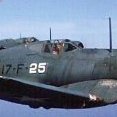

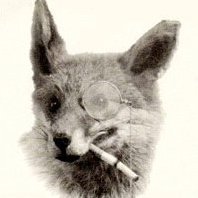

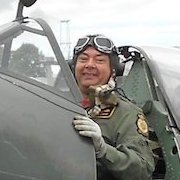
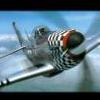

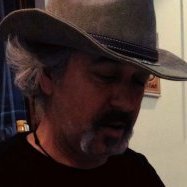

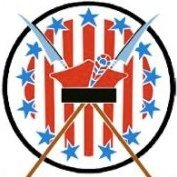

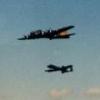


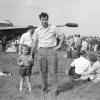
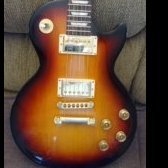
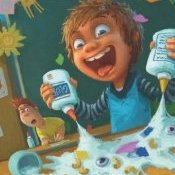

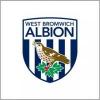
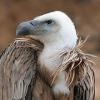

.thumb.jpg.7a01d8b1929350b9124abee30c008ca9.jpg)


